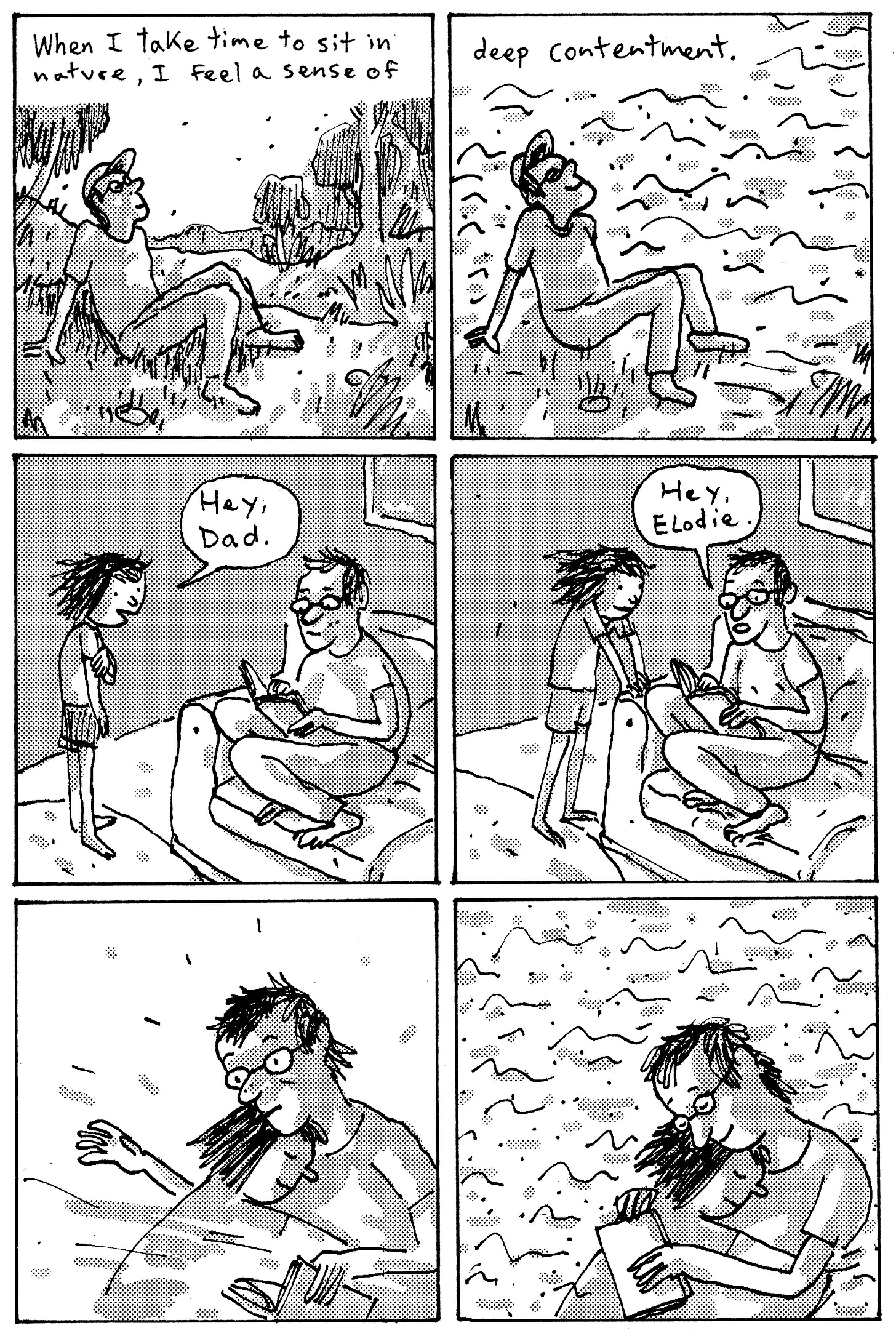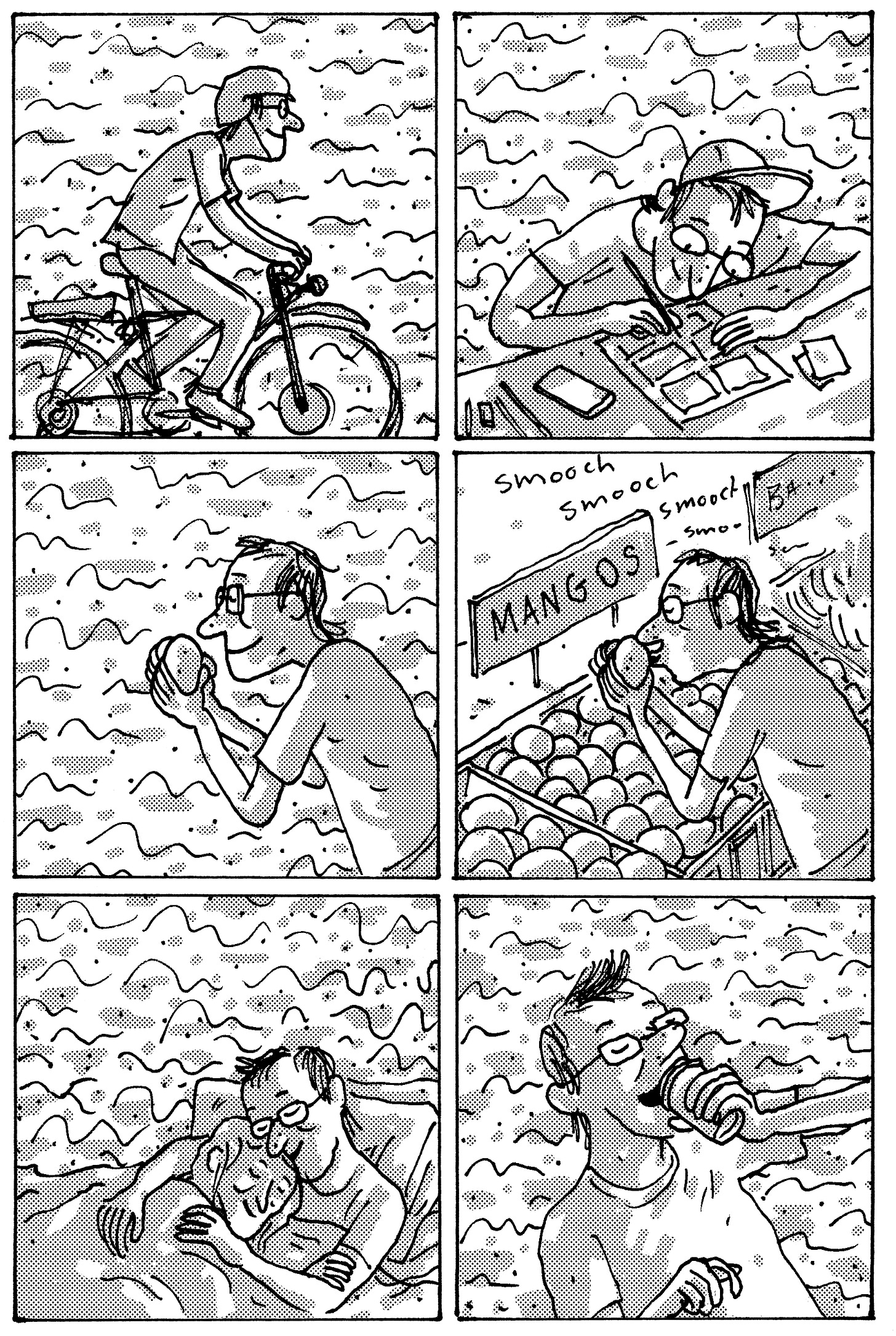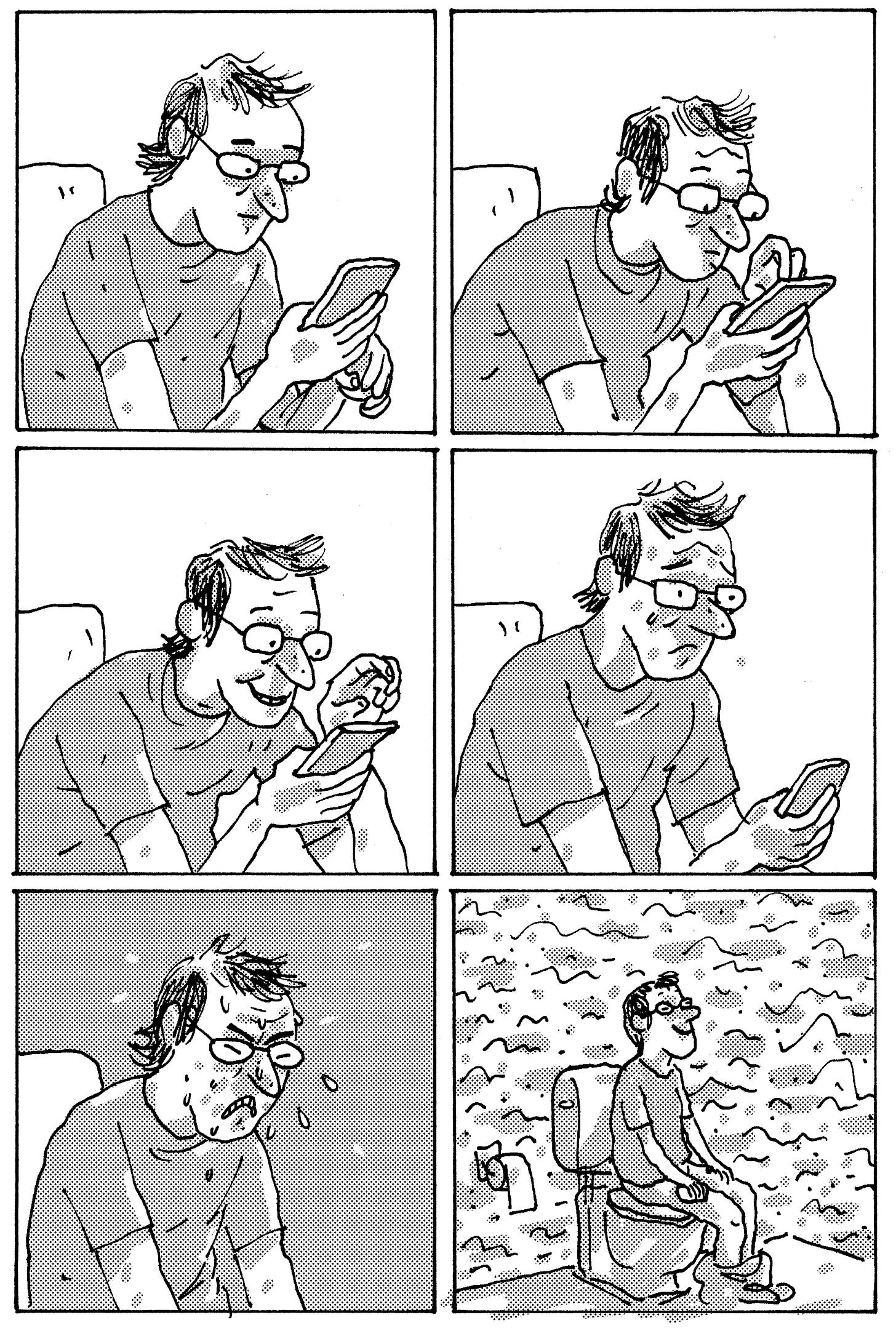Visual Association (version 2.0)
Linking specific feelings to visual elements to create emotional subtext
Visual Association (Version 2.0)
Link abstract mark making and a specific emotion to create clear narrative subtext.
This exercise is a reworked and updated version of Visual Association (Version 1.0)
What you need:
Cheap Post-It Notes (the translucent kind)
Paper
Pen or pencil
Human emotions
Instructions:
Write down of a few situations or activities that always conjure a particular emotion. Things that make you nostalgic, frustrated, lonely, anxious, filled with love, overjoyed, tired, etc…
Pick one and draw the emotion using only abstract marks on a scrap paper. Don’t draw anything representational, instead, try to capture the emotion as a texture.
For further clarification or to dive a little deeper into this concept, try this exercise.
On a Post-It Note, draw yourself in the situation or doing the activity that causes you to feel that emotion. Include yourself and a background/location. This is your first panel. Leave space at the top for narration (don’t write anything yet).
Put a blank Post-It over your first panel. If your Post-It Notes are off-brand, you should be able to see through them. Leaving the background out, draw yourself again in the same (or a similar) position. This is your second panel. Again, leave a little space at the top for narration.
Fill in the background of your second panel with the abstract marks you made to represent your chosen emotion. Remember to still leave space for narration at the top.
On your scrap paper, write a brutally direct, short sentence that says what you are doing and how it makes you feel. The final word of the sentence should be the emotion you chose.
Example: Putting on new socks for the first time fills me with joy.Another example: When I’m riding my bike and a driver cuts me off I burn with terrible anger.”
Apply your sentence to your panels as narration, with the vast majority of the sentence on the first panel, and only the emotion on the second panel.
Now, without text, repeat this panel pattern with a different situation or activity that makes you feel the SAME EMOTION. This time, don’t include narration.
First draw yourself in the situation with a background.
Then, on the next panel, draw yourself in the same (or a similar) position surrounded by the same abstract marks.
Once this pattern is established and the emotion is clearly linked to the abstract marks, you can add them to pretty much any moment and it will create an emotional subtext.
If you want to continue to explore this idea, come up with a few more situations and try the following:Capture your emotion in one panel. Draw yourself doing something that makes you feel that same emotion and use your abstract marks as the background.
Introduce your emotional subtext as part of a (slightly) longer sequence. Draw yourself engaged in a situation that gets drawn out over a number of panels and ends with you feeling your chosen emotion.
Try using your abstract marks to show a different character feeling your chosen emotion.
Add your emotional subtext to a surprising moment, one where a reader wouldn’t expect you to feel your chosen emotion.
As long as you are clearly linking an emotion (or other concept) to a visual element, this exercise works with all sorts of visuals. Instead of abstract mark making, you might try using a colour to represent your concept or emotion, or you might try linking a different drawing style to your emotion or concept.
Thoughts:
I recently ran this exercise at a workshop at the inaugural Healesville Zine and Comics Festival. I’ve run exercises and workshops on visual association many times before as it’s a uniquely powerful communication tool, but I’ve never been 100% happy with them. This version is a little more prescriptive but I think it creates a clearer, stronger understanding of the core concept and how to apply it than previous attempts.
I also want to add that this is a pretty brutal approach to visual association. It is not necessary to be so obvious with the text. I think visual association works best when it’s integrated more naturally, introduced through narrative or slowly build up over time. I have a longer and less brutally direct example of visual association accompanying the previous version of this exercise (I think that story is one of the better comics I’ve ever made).
Oh, and if you want to see this concept used really beautifully, check out Lee Lai’s new book, Cannon. Lee is one of my absolute favourite comics makers in the world (Stone Fruit! OMG) and Cannon is predictably wonderful.
The end…
Oh, wait, a few quick updates!
Low Pressure Comics Systems, the two week, online comics class I’m running with the Sequential Artists Workshop this December is… sold out! Thank you so much to the folks that signed up! Excited to get to chat and make comics together.
If you missed out, I have plans to run some comics classes and maybe trial a few comics mentorships in the new year. More on that soon, but in the meantime, please reach out if you’re interested.
Making Nonfiction Comics, A guide to graphic Narrative just came out and… it is SOOO GOOD! It was written and drawn by Eleri Harris and Shay Mirk, both of whom are award winning comics makers and were longtime editors for The NIB.
It is… genuinely the best book about making comics that I’ve ever read.
That’s it! This is really the end.
xo
me





Ahhh... I am so slow.. I would love to hear about future classes!
I was going to ask if there is a slight chance the workshop to be recorded because my time zone is a hard fit unfortunately.
Bummer - I missed out on enrolling too - I knew it would go fast, despite it being the busiest time of year!
I would be interested in next year's courses, etc - I'm on SAW mailing list, so hopefully this might be where you'll be doing these :)